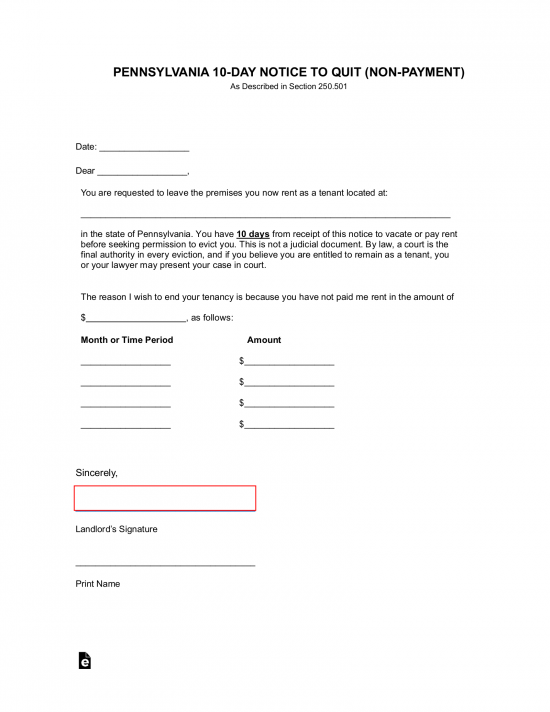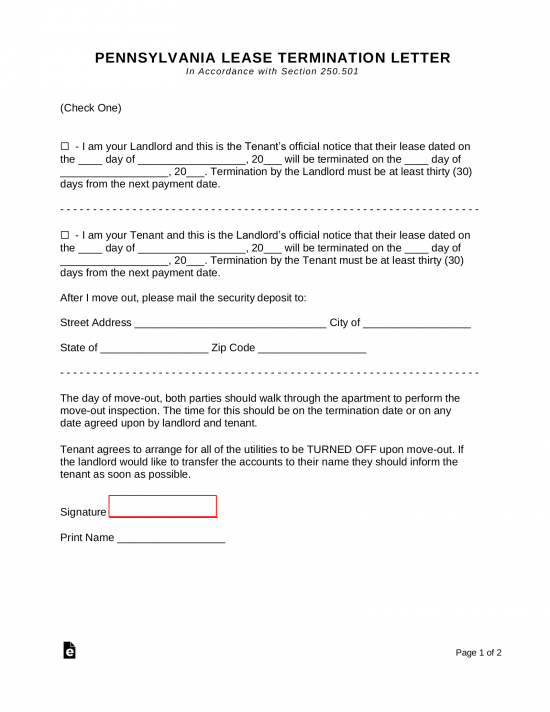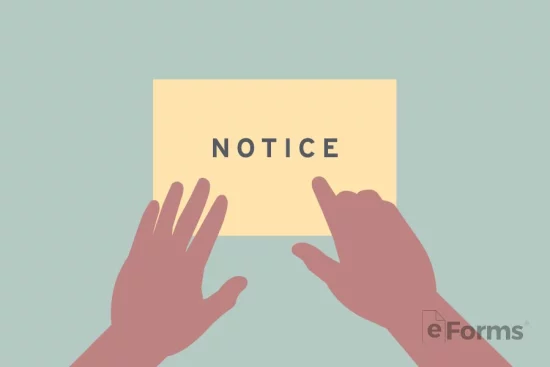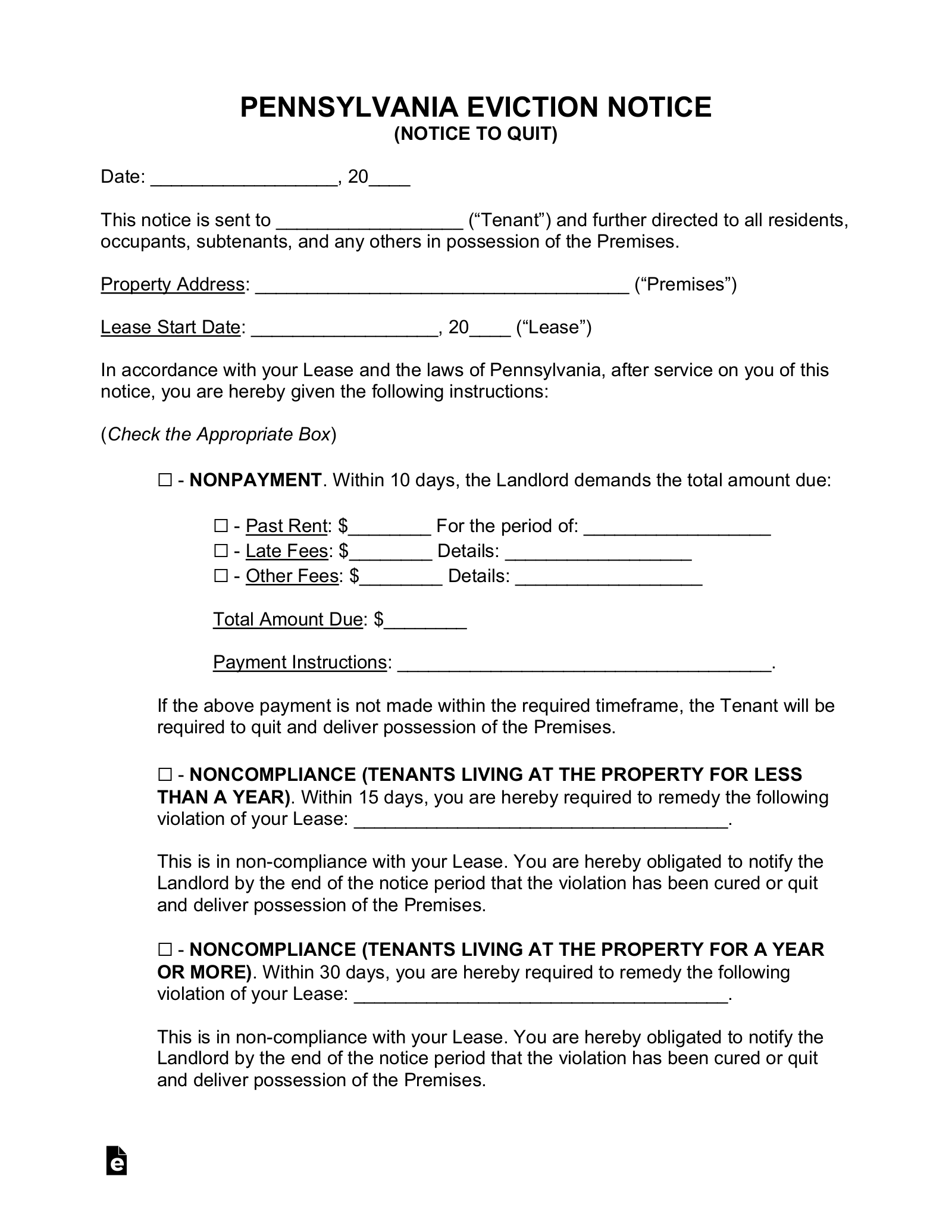Updated March 28, 2024
A Pennsylvania eviction notice is a form for landlords to inform a tenant that they have violated their lease contract. The notice gives the tenant the opportunity to correct the issue. If the tenant does nothing, at the end of the notice period the landlord is able to file an eviction lawsuit at the Local Magisterial or Municipal Court.
By Type (4)
 10-Day Notice to Quit (Non-Payment of Rent) – This notice is to inform a tenant that they are behind on rent and that they have ten days to either pay the outstanding amount or vacate the premises. 10-Day Notice to Quit (Non-Payment of Rent) – This notice is to inform a tenant that they are behind on rent and that they have ten days to either pay the outstanding amount or vacate the premises.
Download: PDF, MS Word, OpenDocument |
 15/30 Day Notice to Quit (Non-Compliance) – This form can be used when a tenant is violating the terms of the lease other than non-payment of rent. The 15 day notice is for tenancies of less than one year, whereas tenants who have resided on the property for longer than a year are entitled to 30 days. 15/30 Day Notice to Quit (Non-Compliance) – This form can be used when a tenant is violating the terms of the lease other than non-payment of rent. The 15 day notice is for tenancies of less than one year, whereas tenants who have resided on the property for longer than a year are entitled to 30 days.
Download: PDF, MS Word, OpenDocument |
 10-Day Notice to Quit (Illegal Drugs) – This form is to be used when a tenant has been engaging in the use of illegal drugs. 10-Day Notice to Quit (Illegal Drugs) – This form is to be used when a tenant has been engaging in the use of illegal drugs.
Download: PDF, MS Word, OpenDocument |
 30-Day Notice to Quit (Month-to-Month Tenancy) – While there is no state law regarding required notice for terminating a month-to-month lease, 30 days is the standard in month-to-month lease agreements. 30-Day Notice to Quit (Month-to-Month Tenancy) – While there is no state law regarding required notice for terminating a month-to-month lease, 30 days is the standard in month-to-month lease agreements.
Download: PDF, MS Word, OpenDocument |
Table of Contents |
Eviction Laws
- Grace Period: State law does not require a grace period for rent.
- Non-Payment of Rent: 10 days.[1]
- Non-Compliance: 15 or 30 days.[1]
- Illegal Drugs: 10 days.[2][3]
- Termination (Month-to-Month Lease): No legal requirement. 30 days is standard.
- Eviction Lawsuit: Actions for the Recovery of Possession of Real Property.[4]
Court Forms
Landlord/Tenant Complaint (AOPC 310A) – Filed by the landlord when attempting to evict a tenant. Before initiating the eviction, the landlord must provide the tenant with a written notice to quit which indicates the amount of time the tenant has to vacate.
Order of Possession – If the landlord wins an eviction lawsuit, this document may be used to request a court order that forces the tenant to vacate the premises within a specific number of days.
How to Evict a Tenant (3 steps)
1. Provide Notice to Tenant
Before a landlord can go to court to have a tenant evicted, they must provide notice as provided by Pennsylvania law. The notice gives the tenant time to either rectify the problem or to vacate the premises. The different types of notices are as follows:
- 10-Day Notice to Quit (Non-Payment)
- 10-Day Notice to Quit (Illegal Drugs)
- 15/30 Day Notice to Quit (NonCompliance)
- 30-Day Notice to Quit (Month-to-Month Tenancy)

2. File Complaint with Court
If the tenant fails to respond appropriately to the notice provided by the landlord, the landlord may then go to court to seek to have the tenant evicted. The landlord must go to the Magisterial District Court in the county or municipality in which the property is located to file a Complaint.
Filing fees range between $94–$161.50.[6] The court will set a hearing date after the Complaint has been filed.
3. Attend Hearing
At the hearing, both sides will have a chance to present their case. If there is a judgment in favor of the landlord, the landlord can seek an Order of Possession after ten days, which will require the tenant to move out within ten days or be forced out of the premises.


